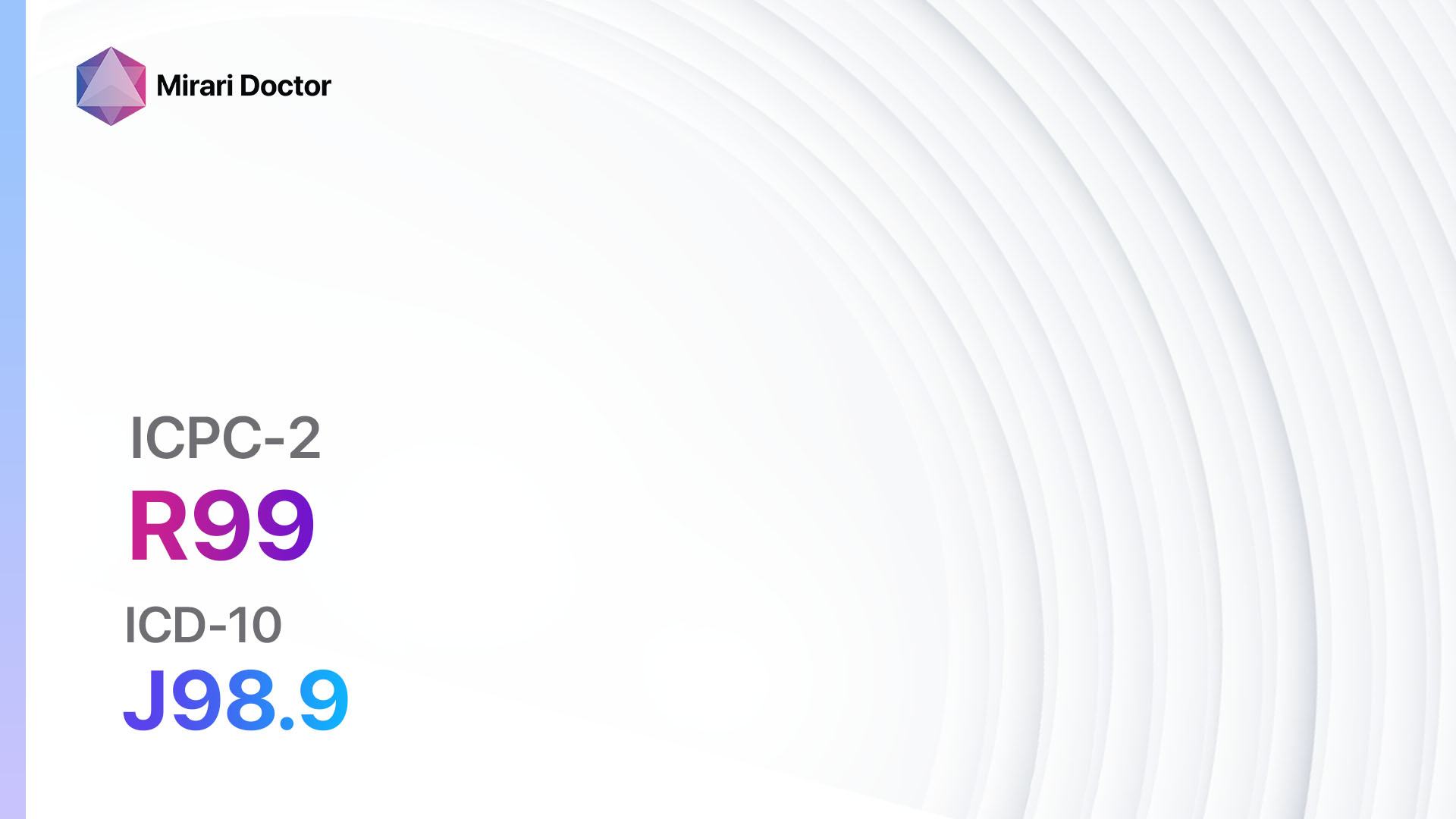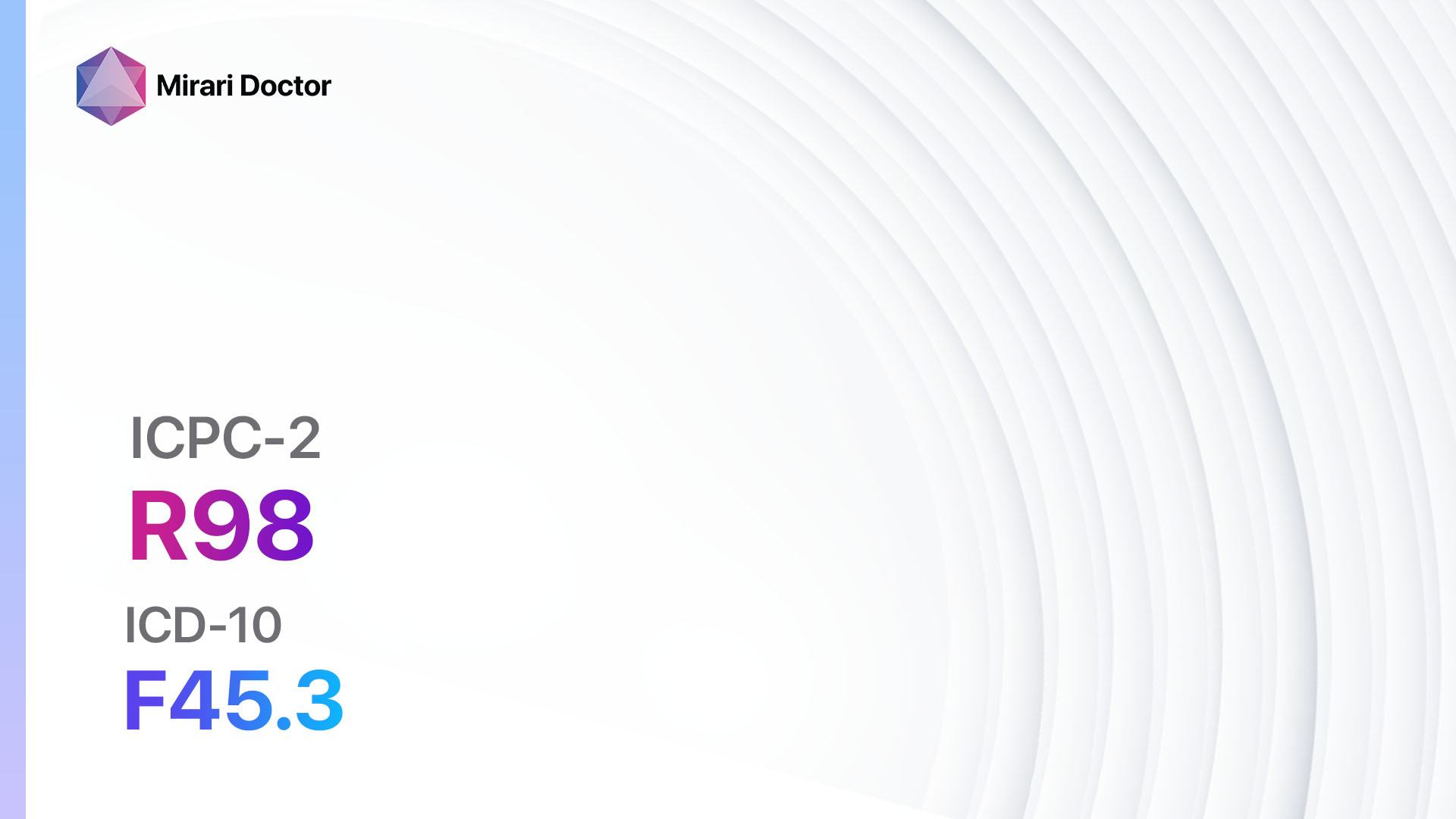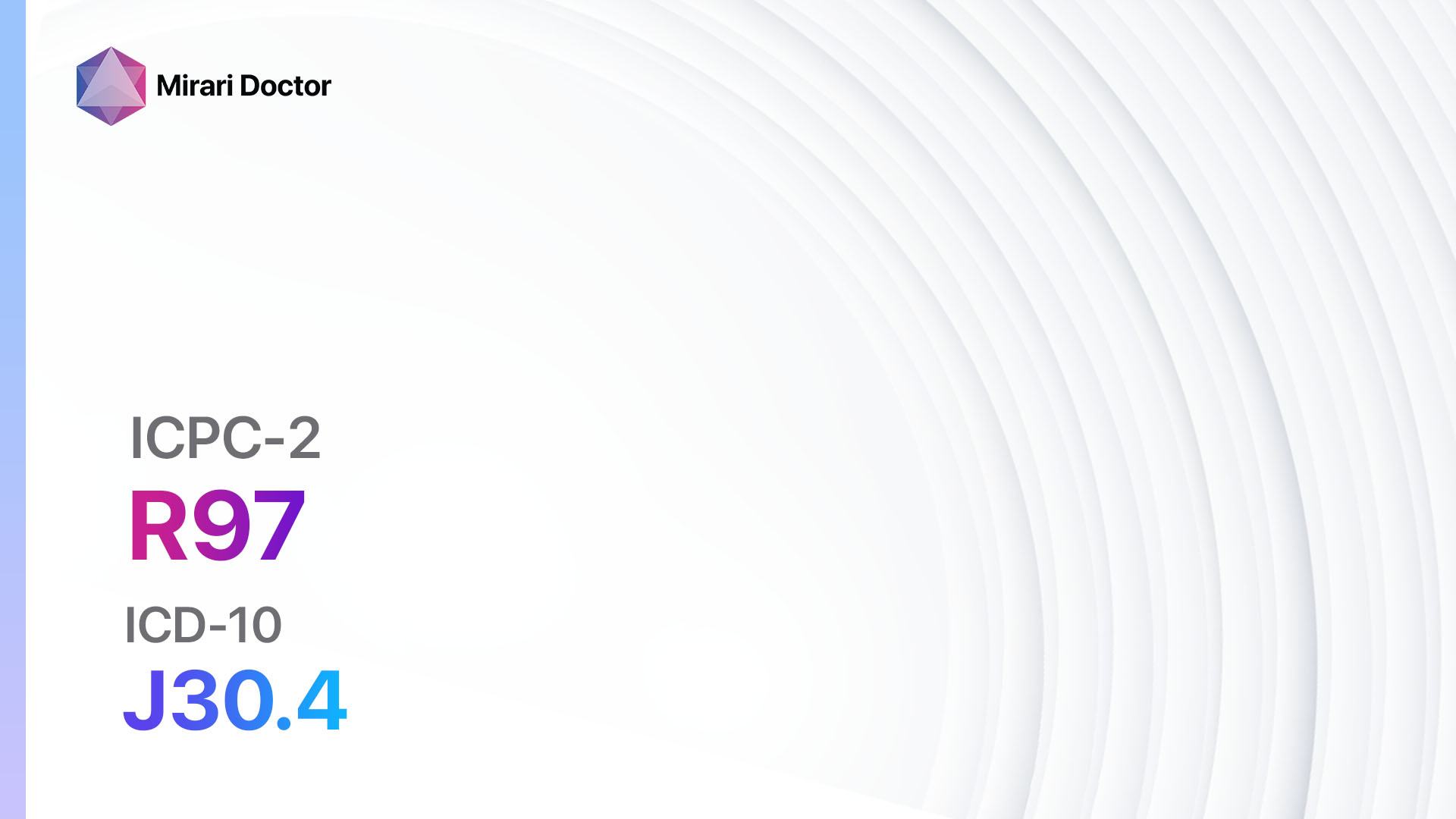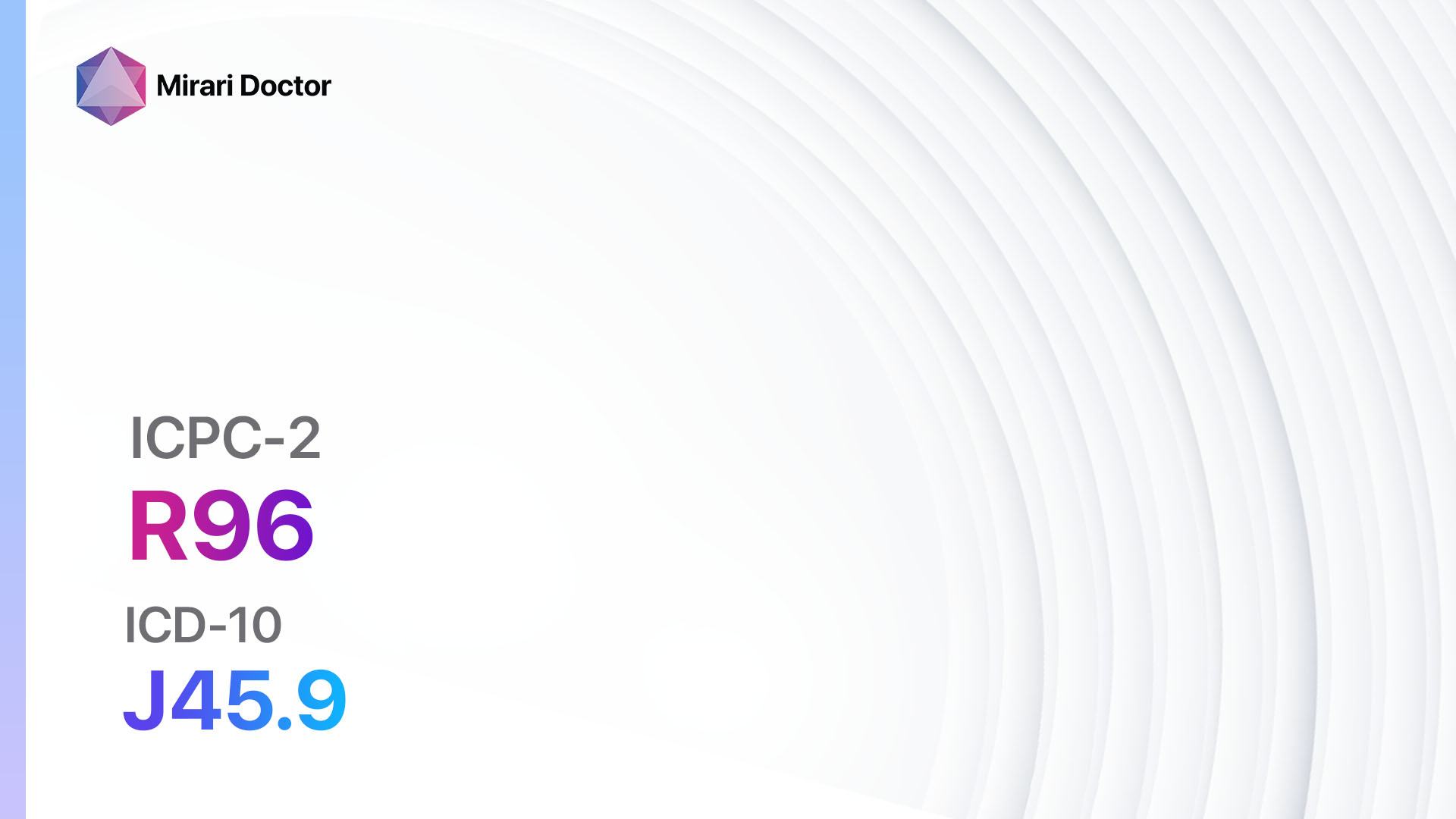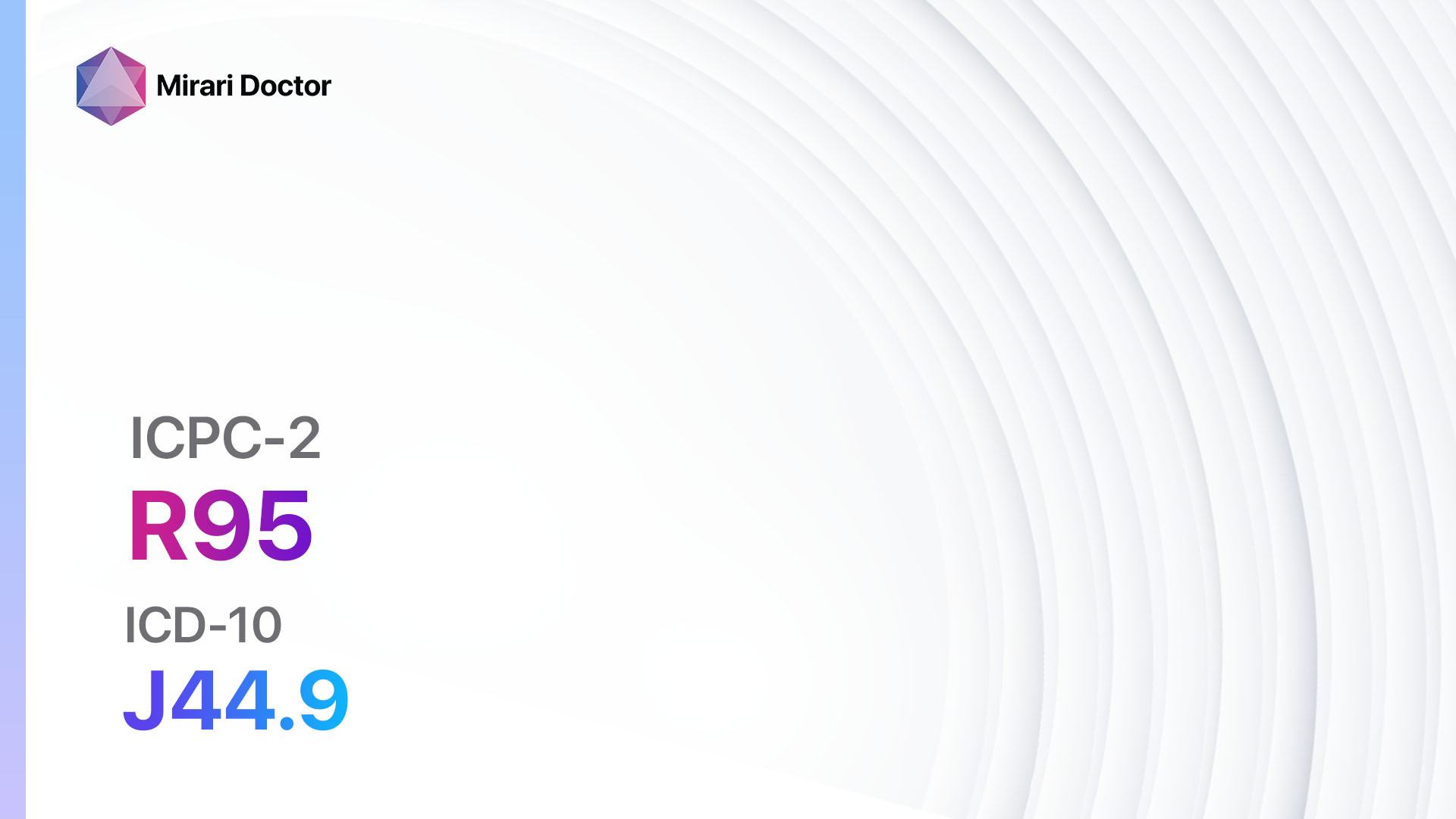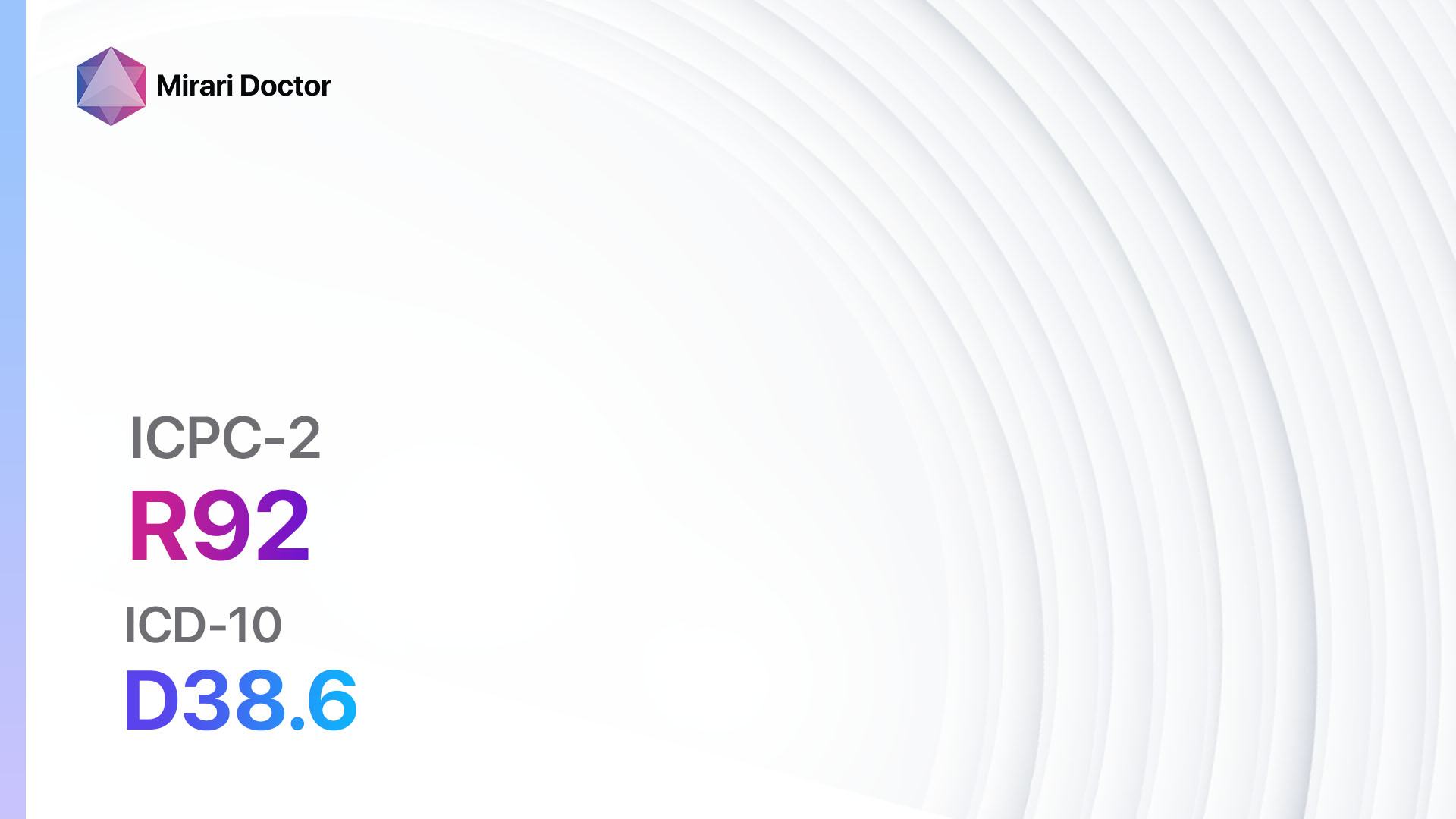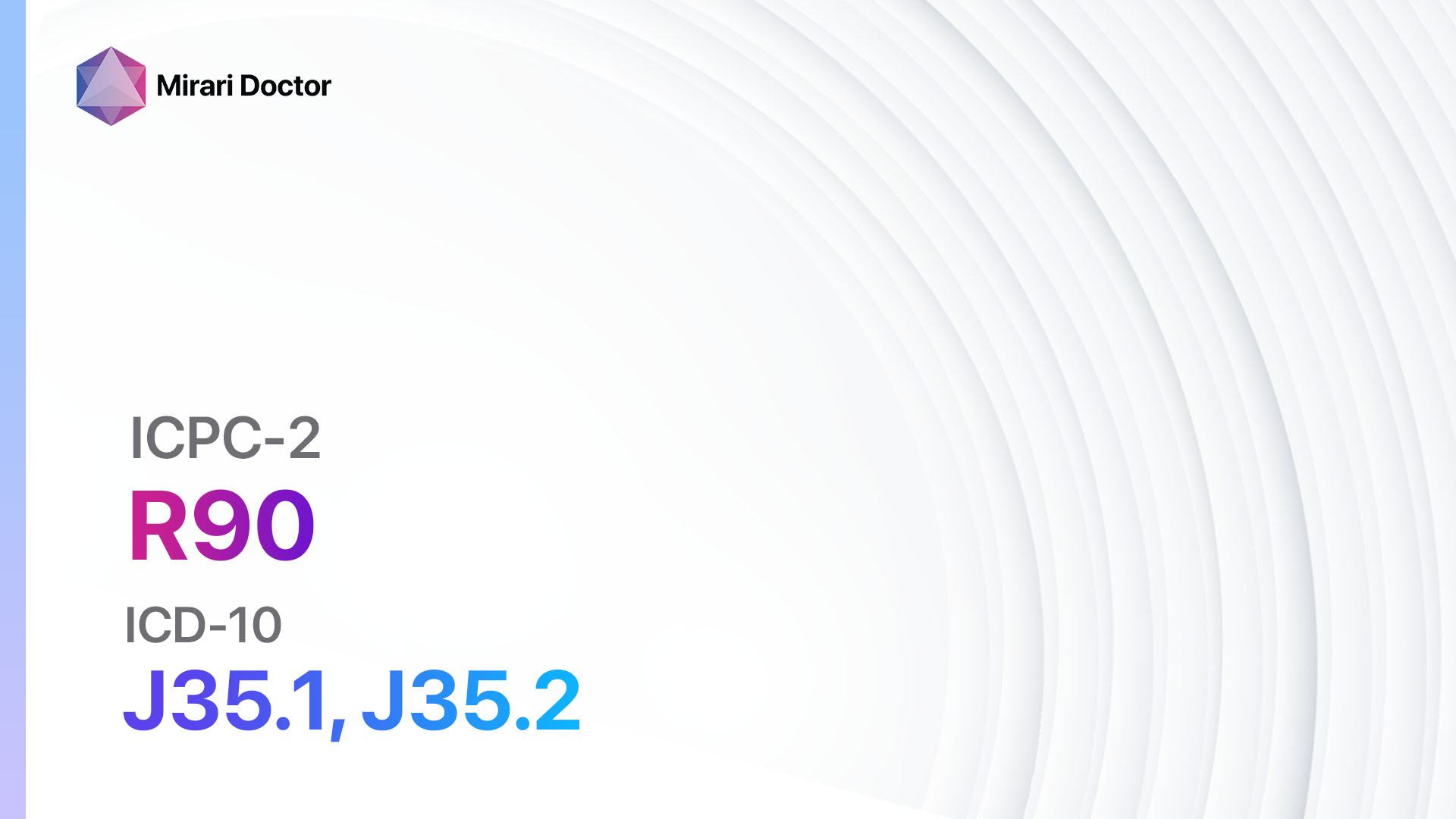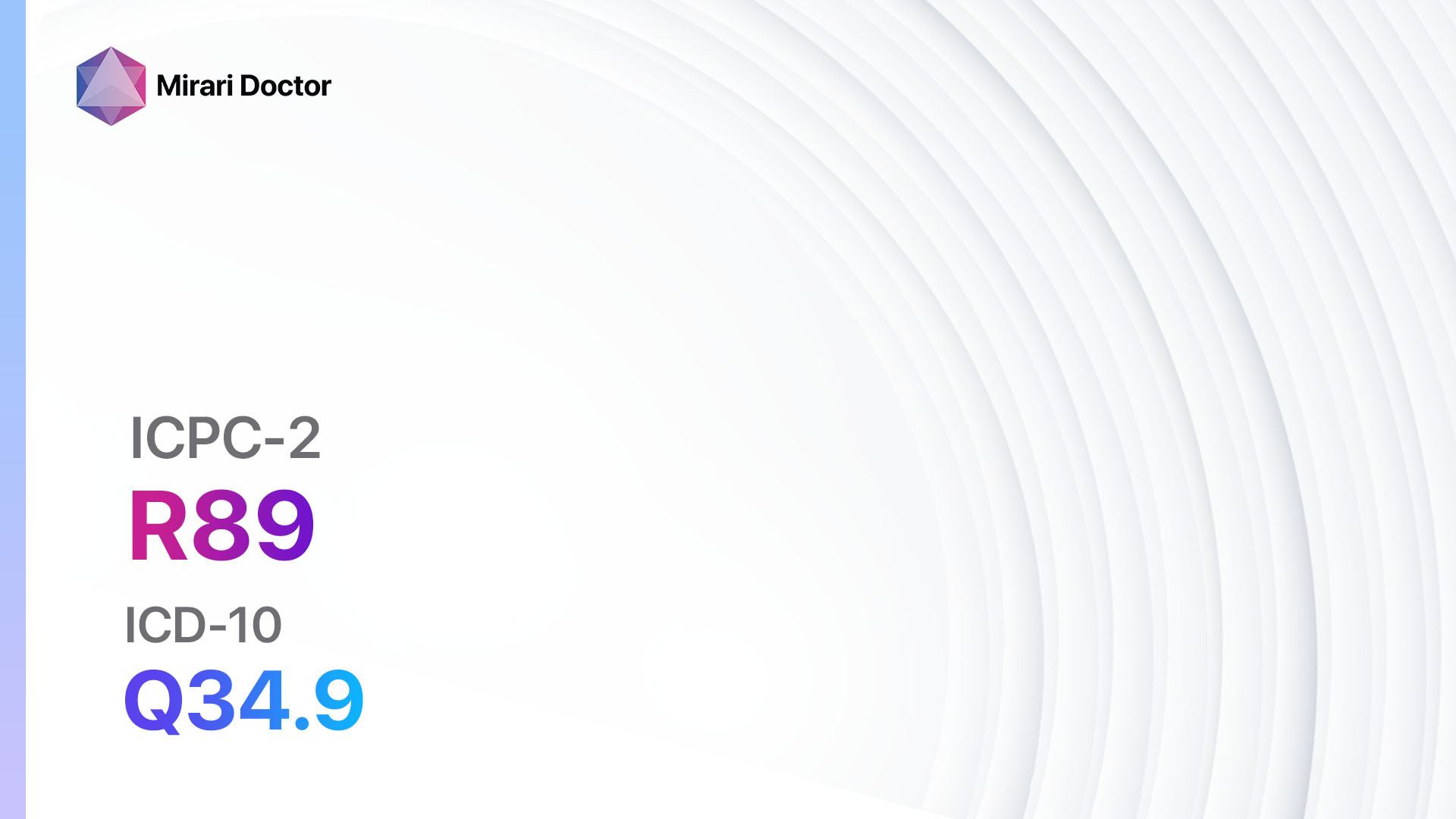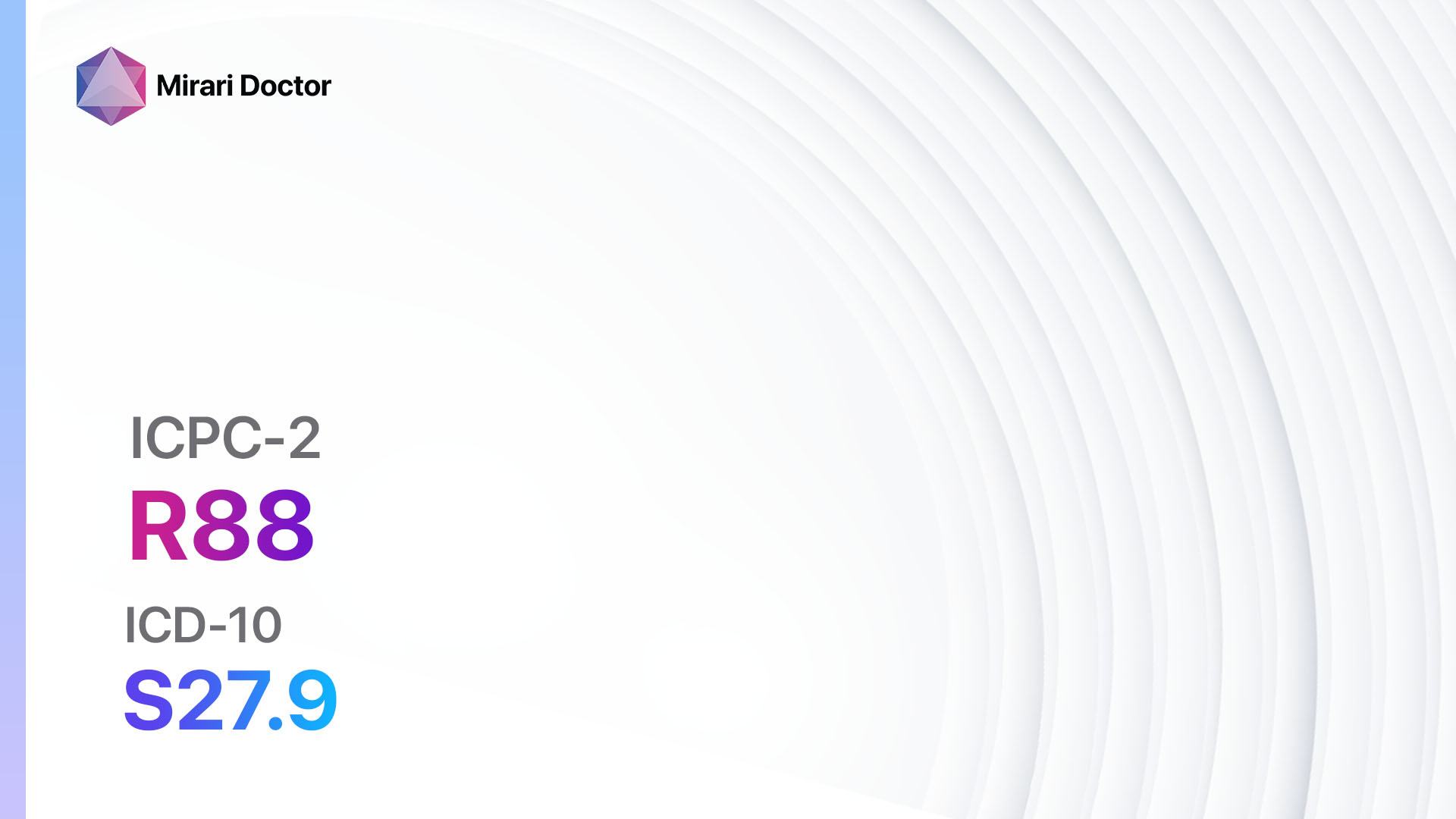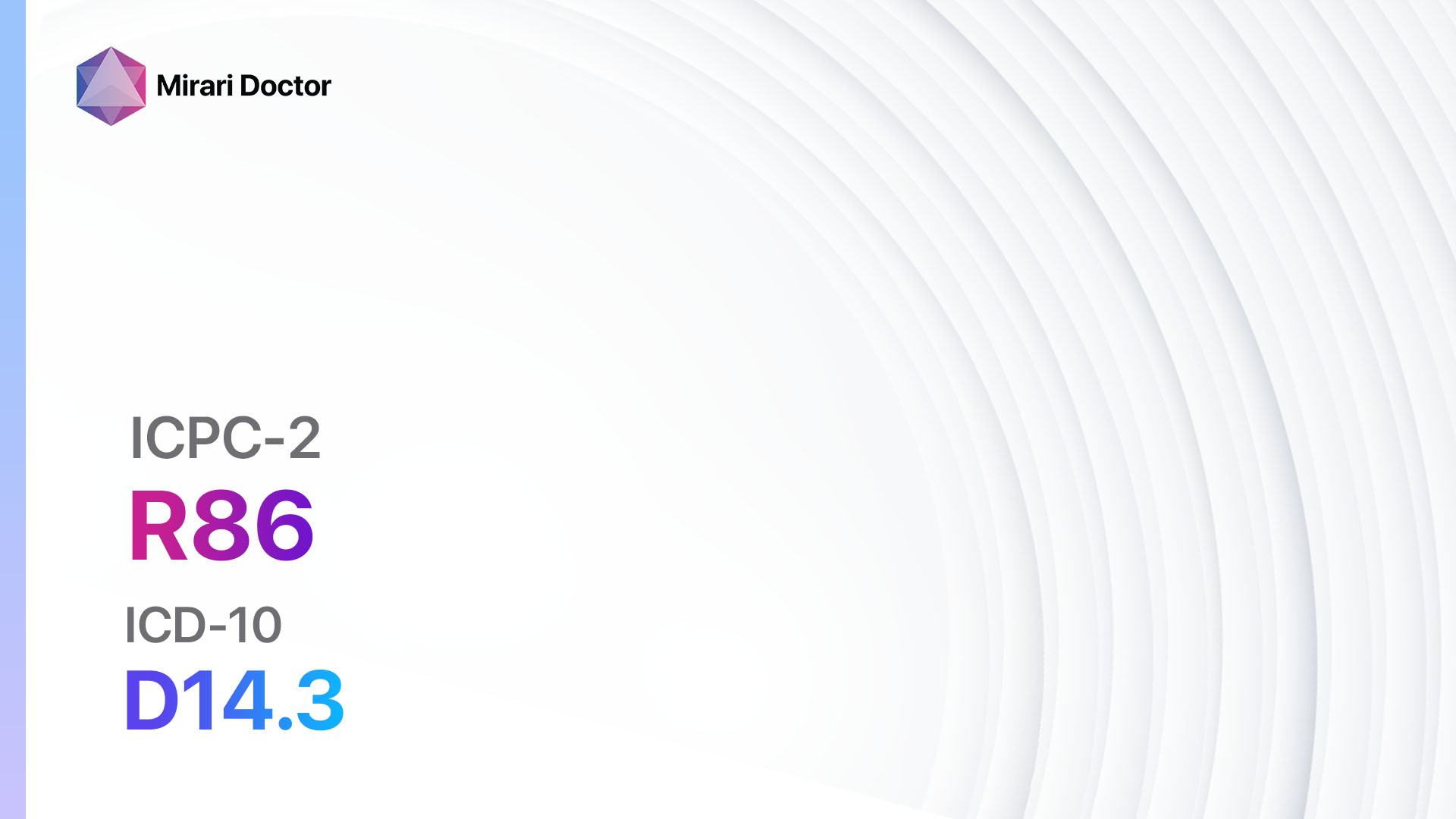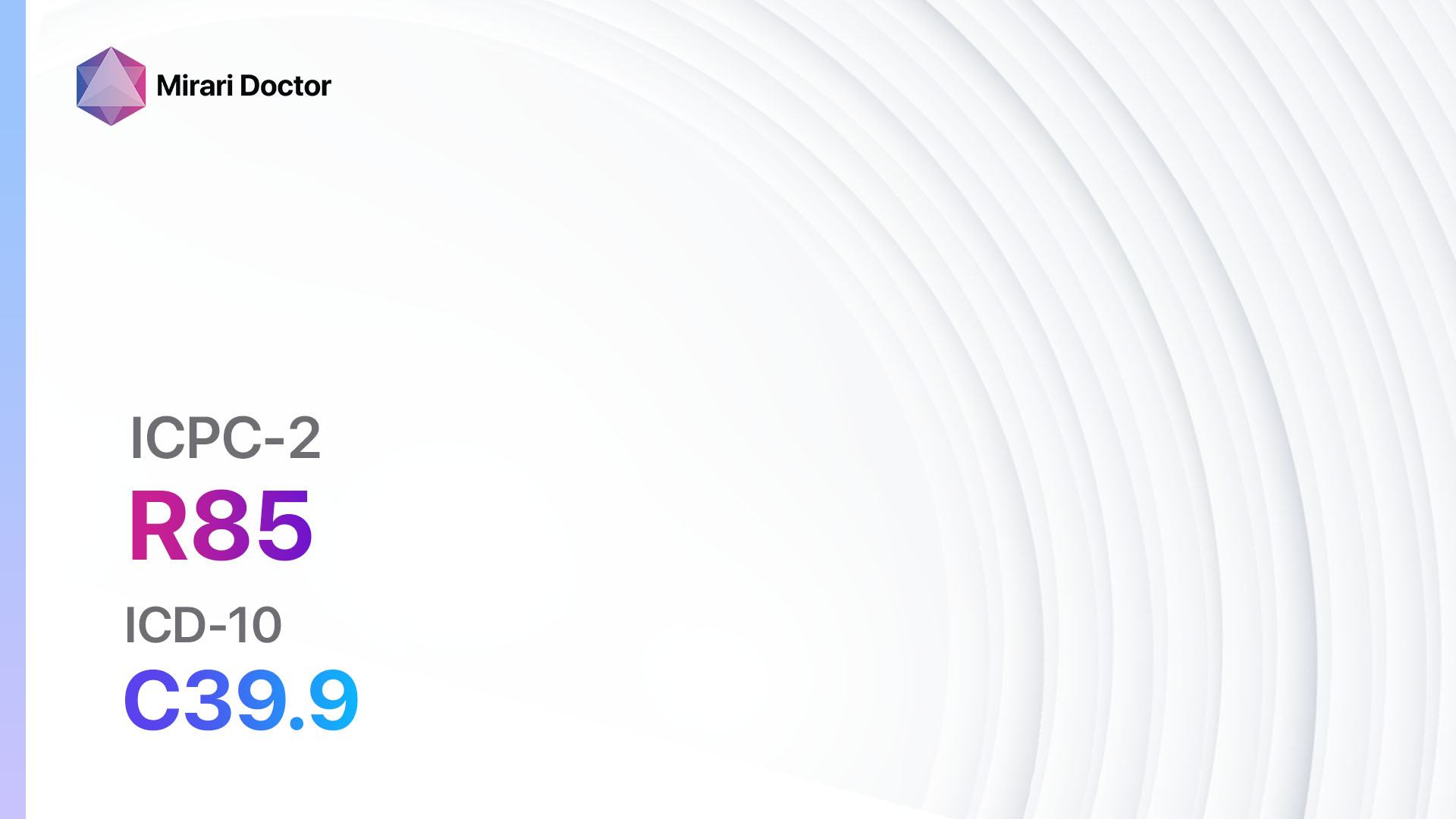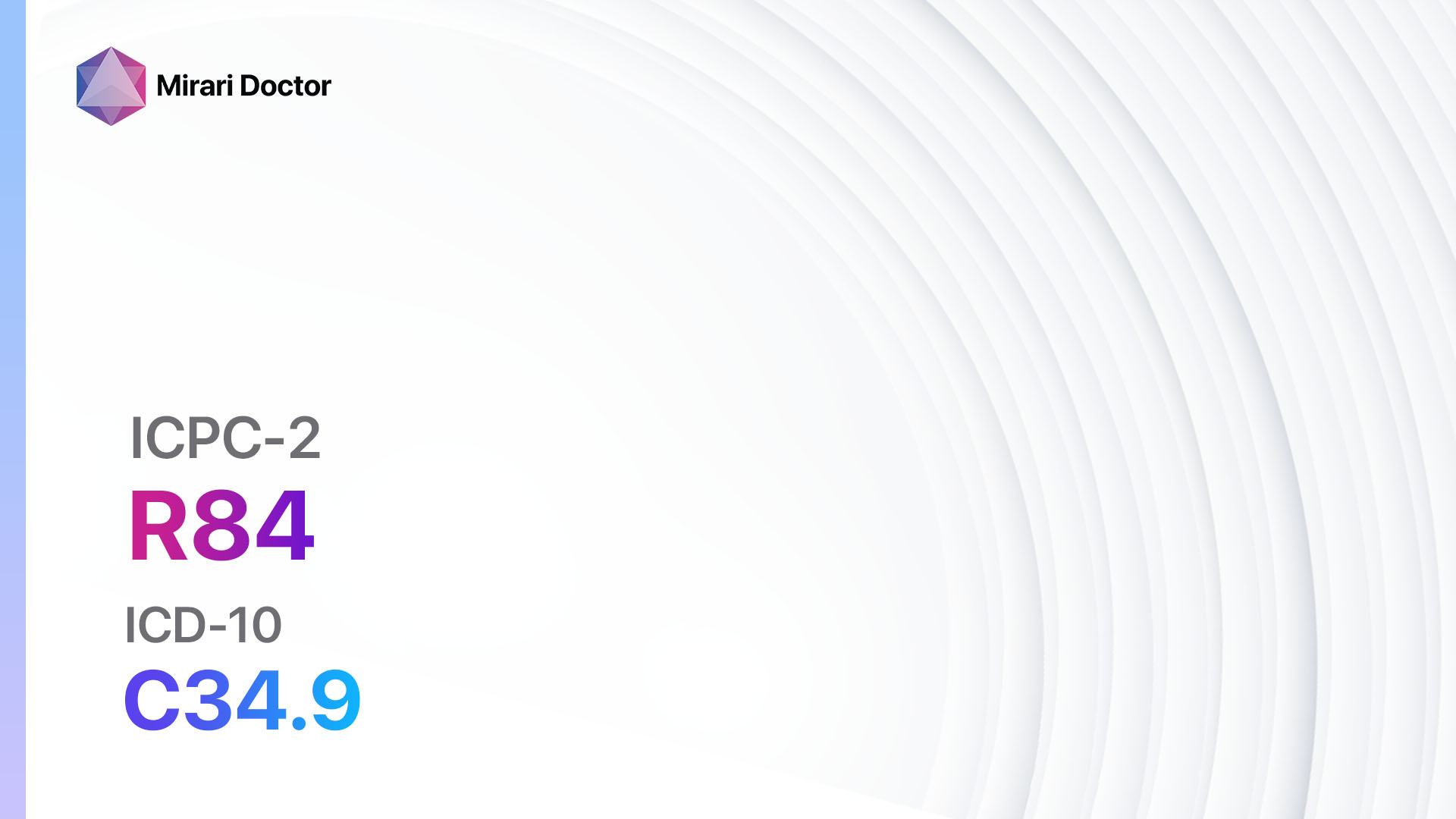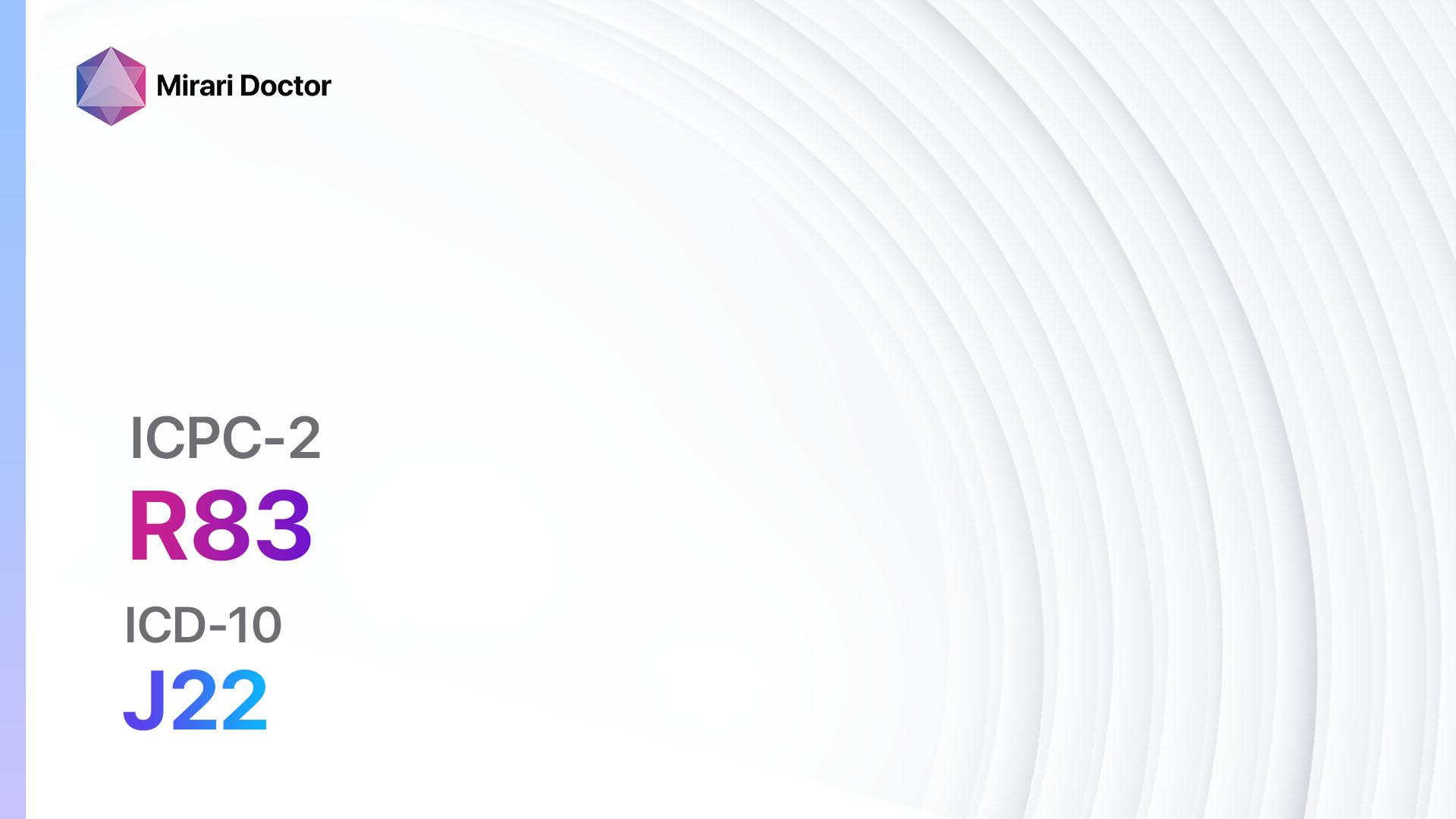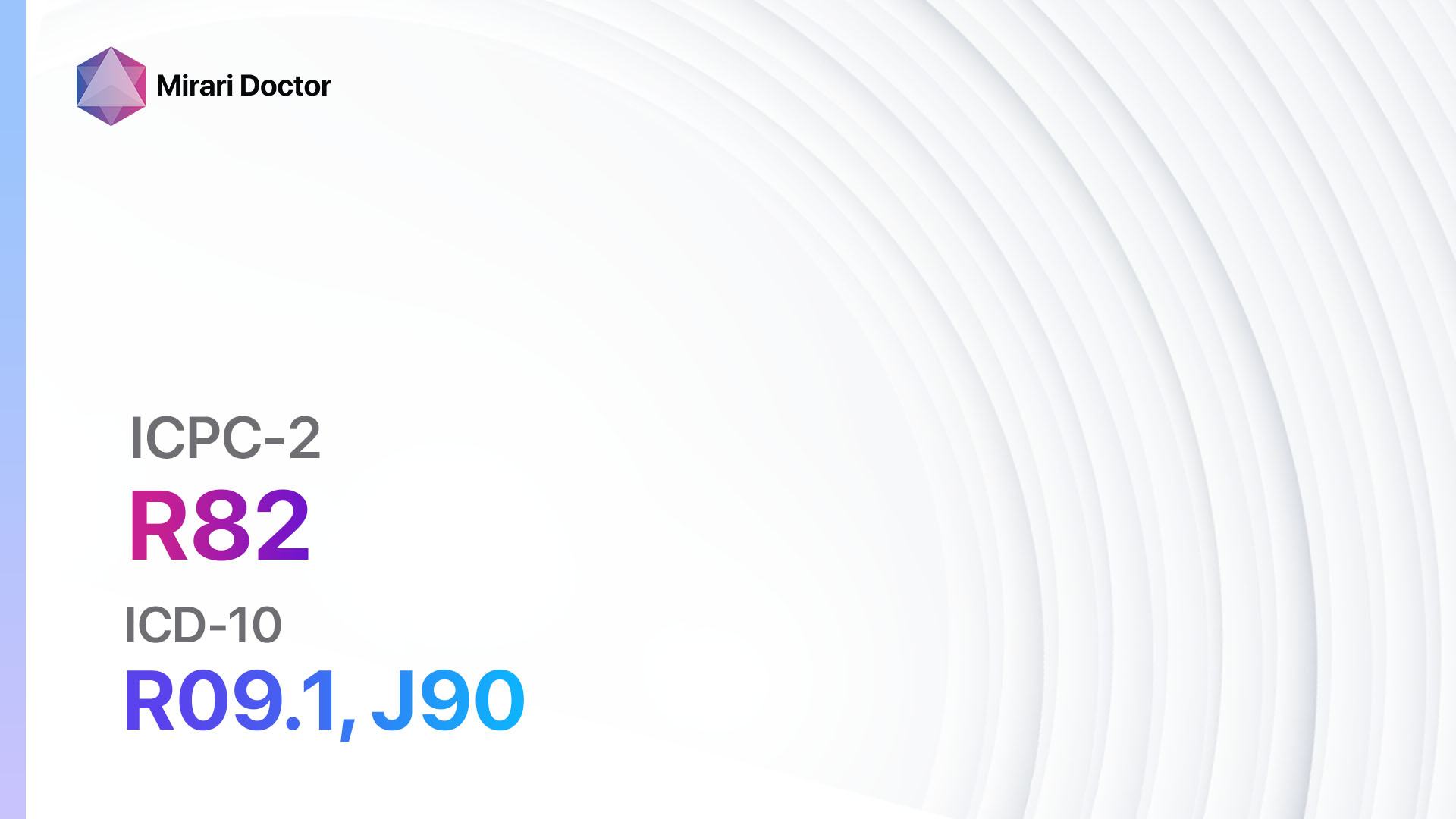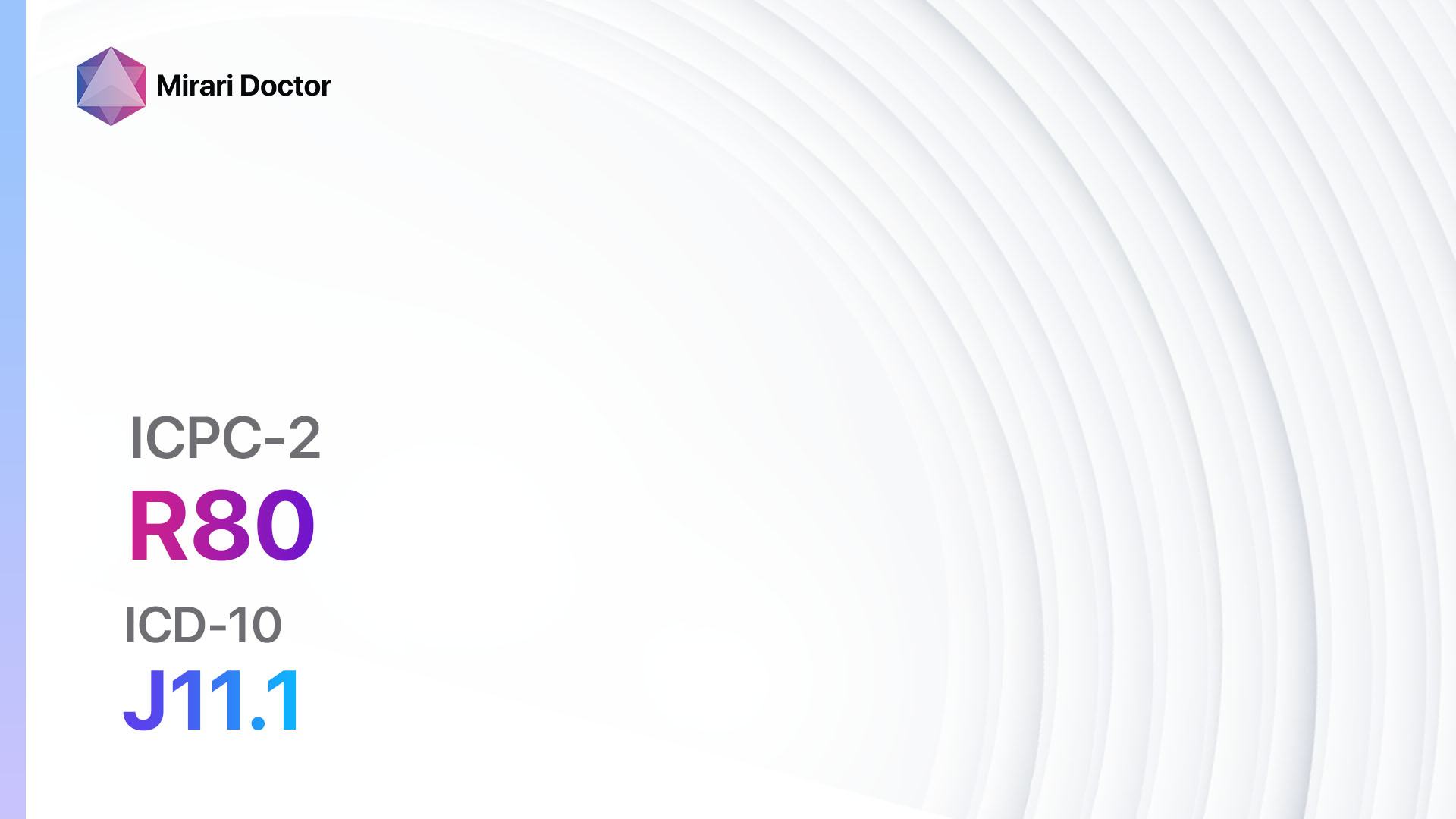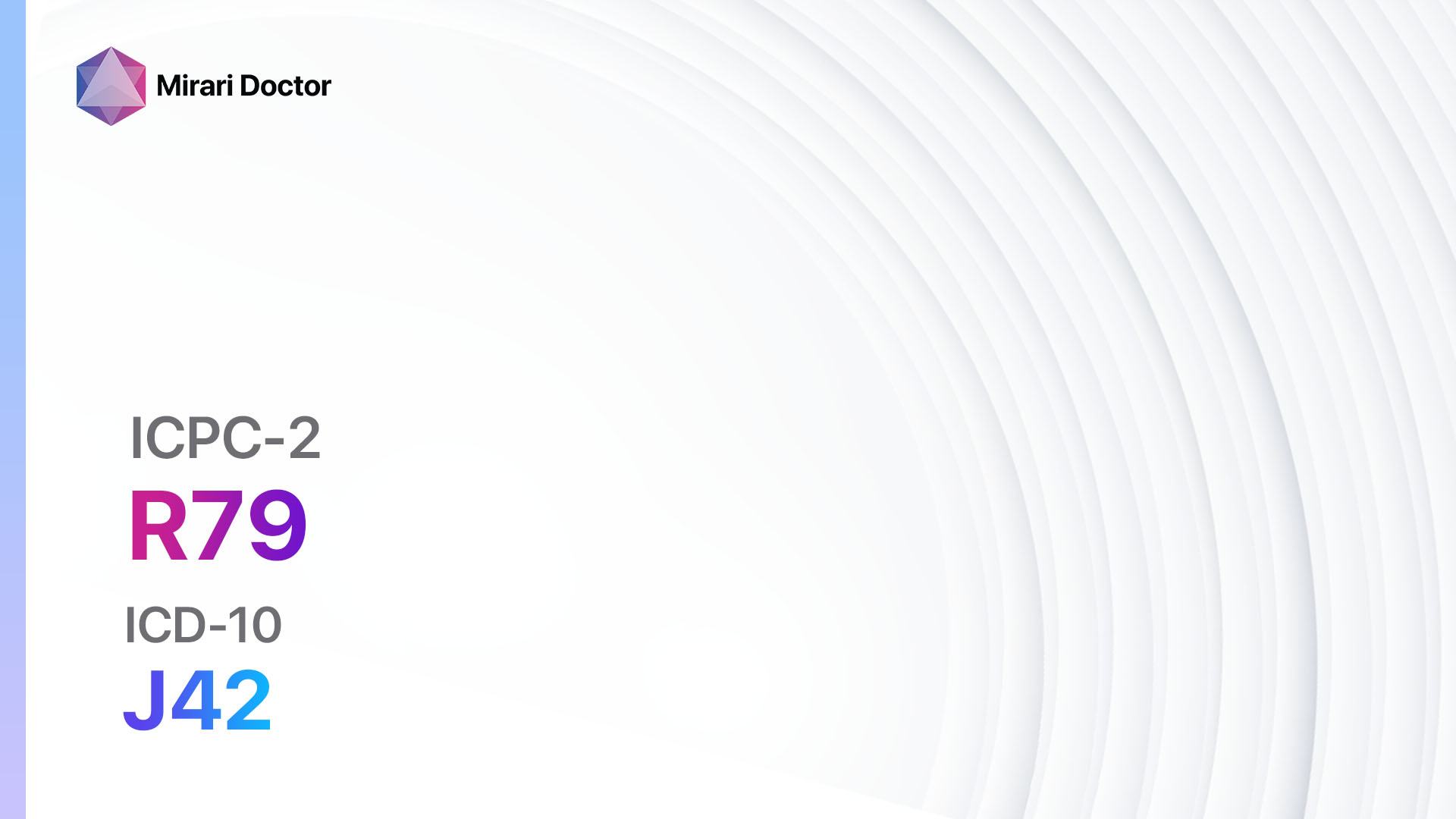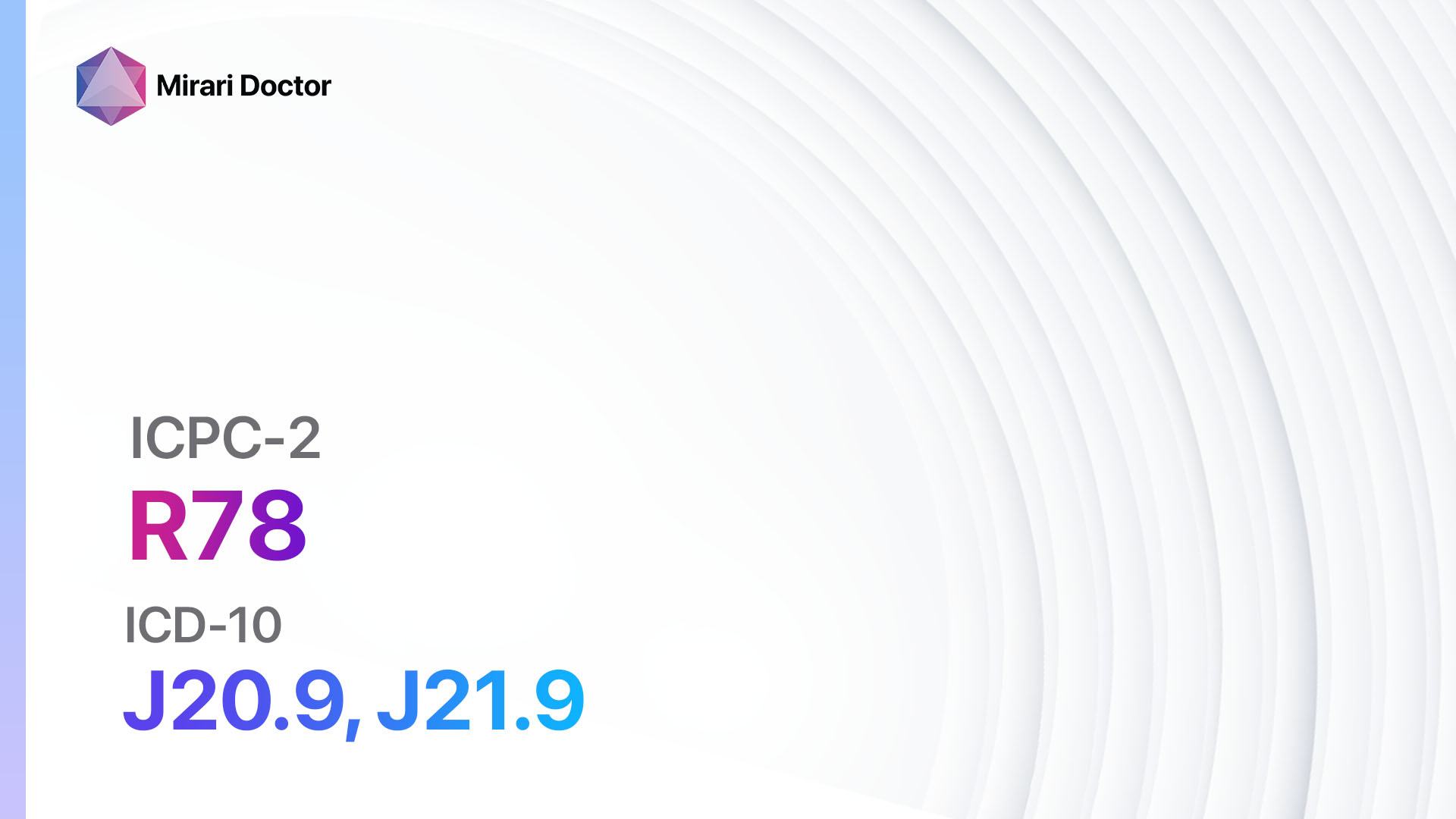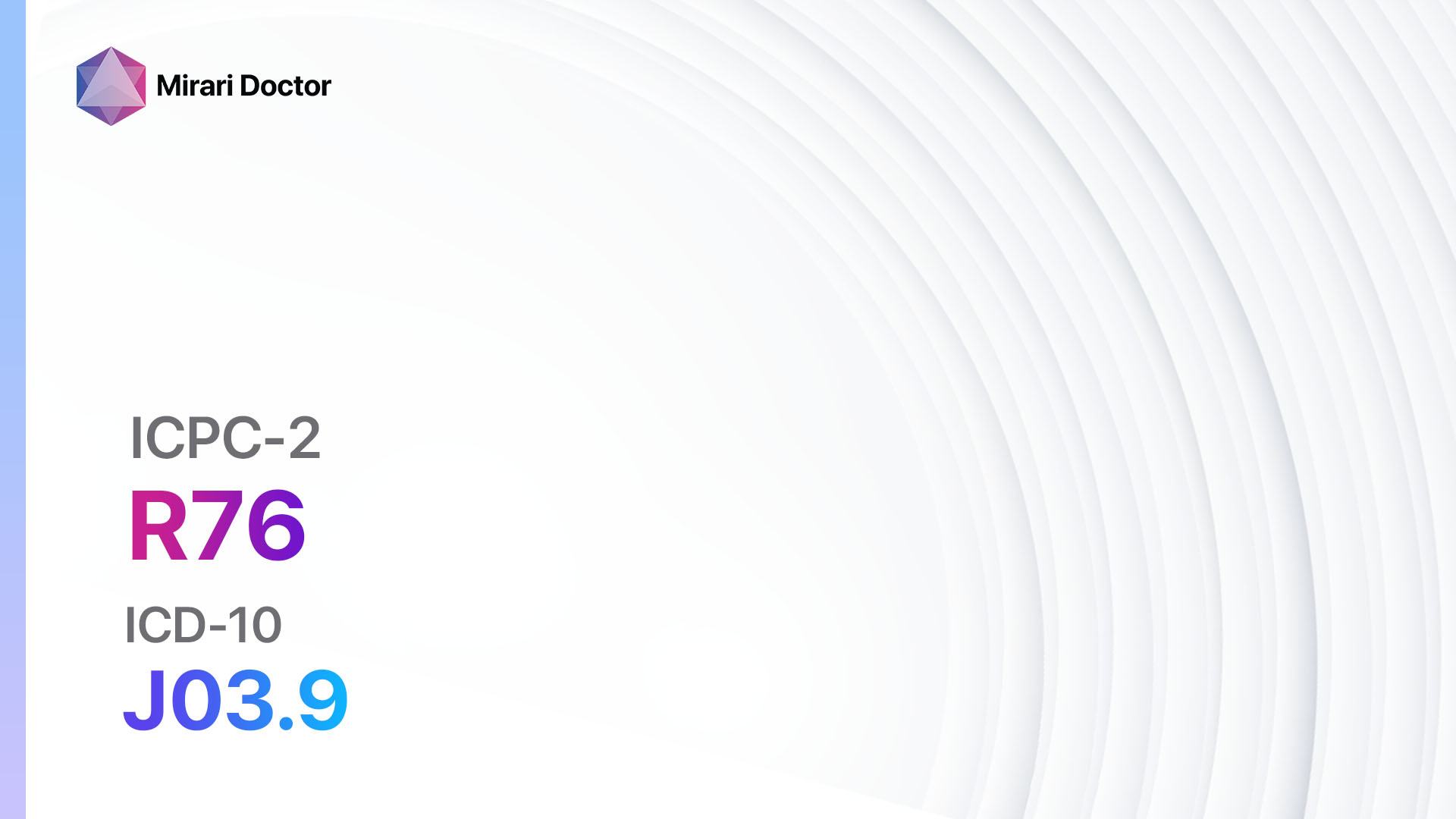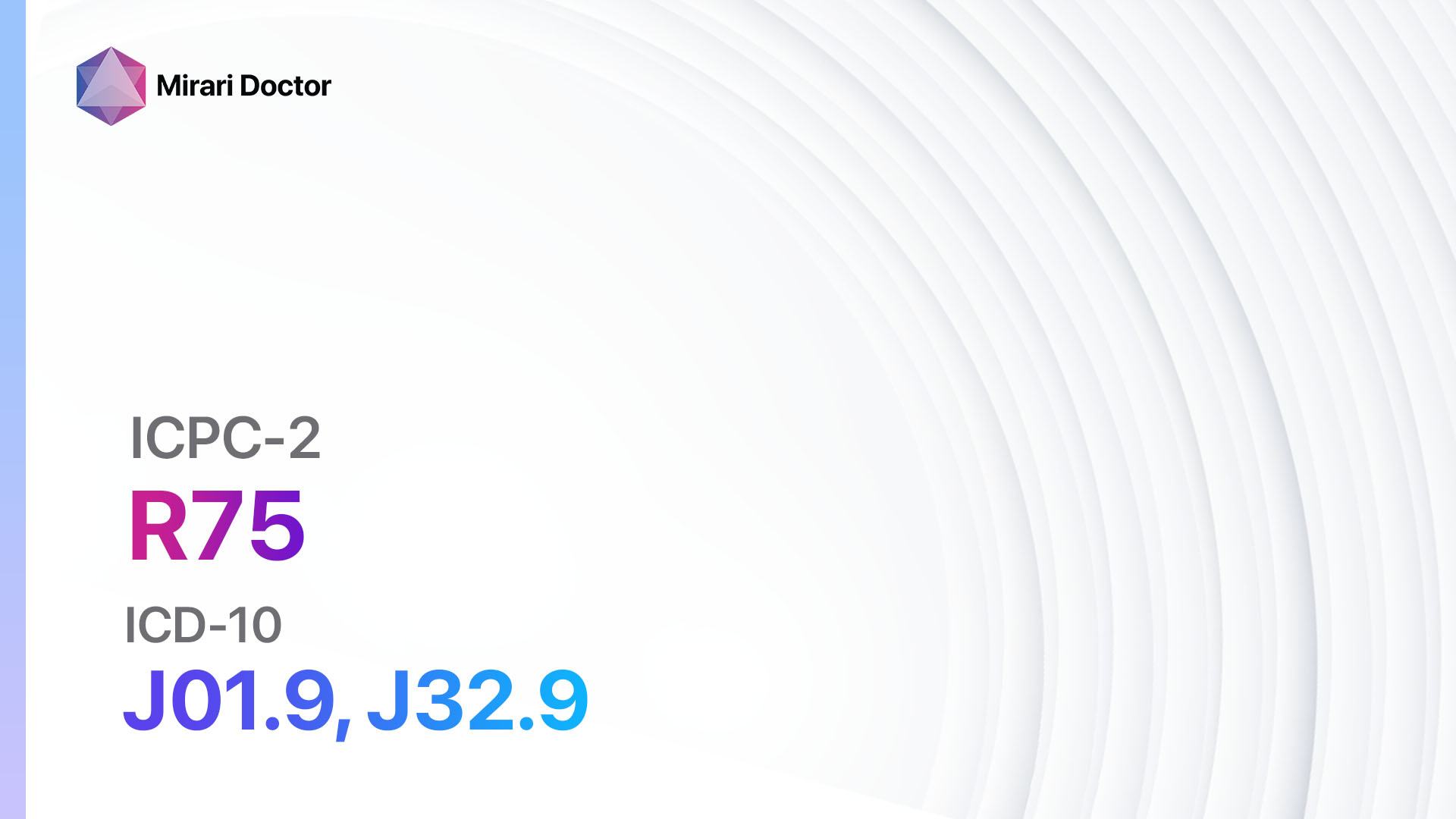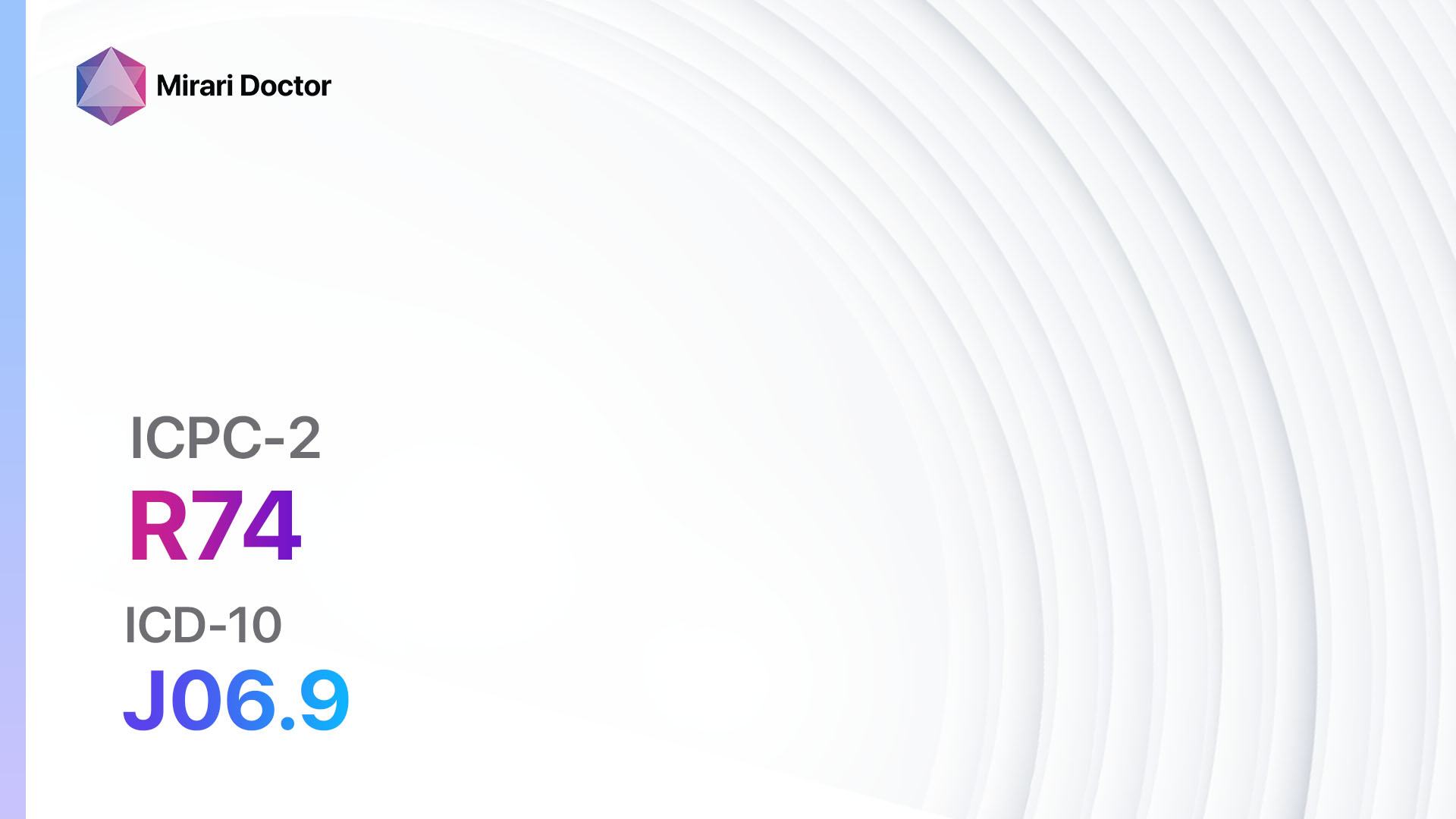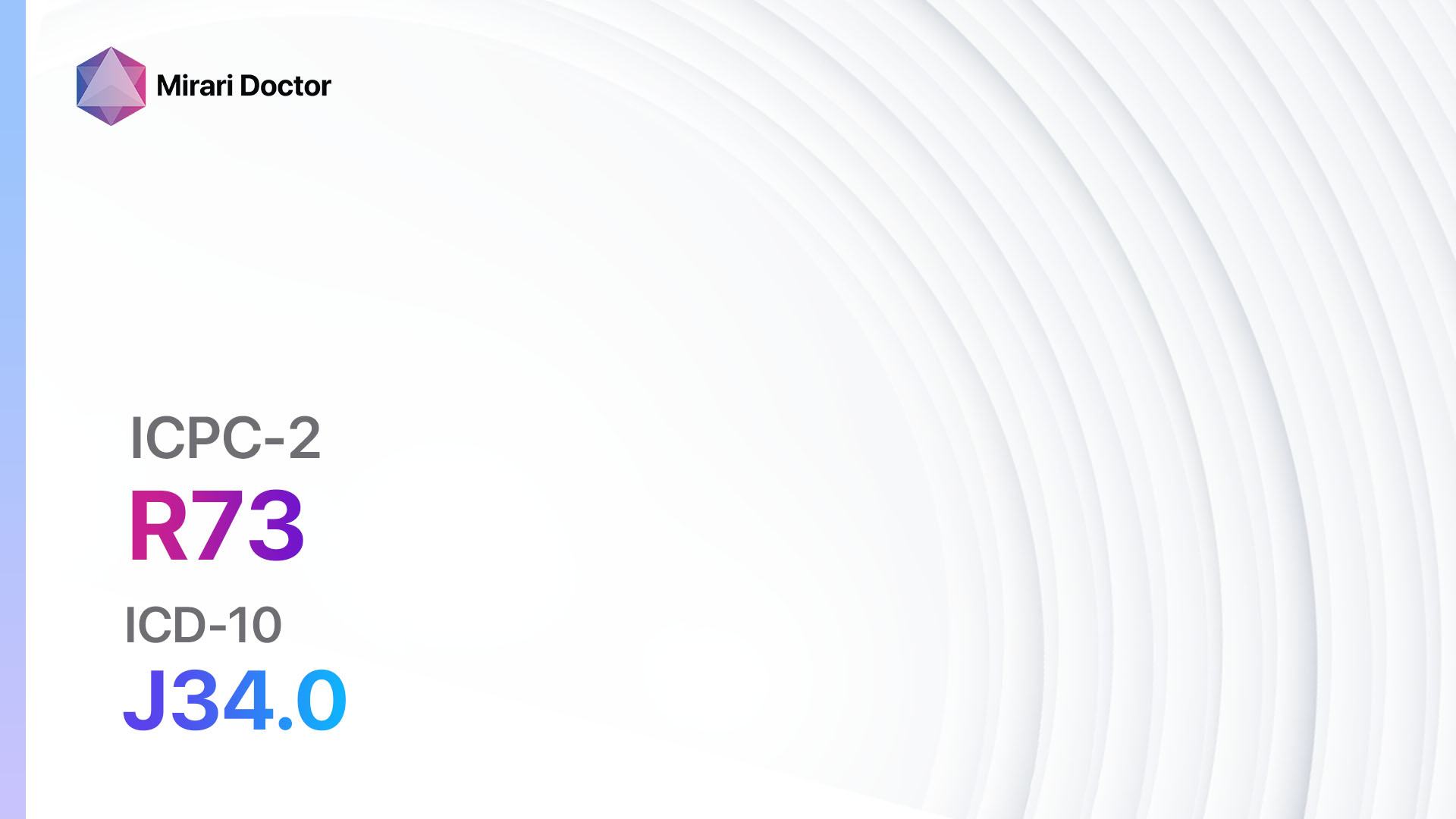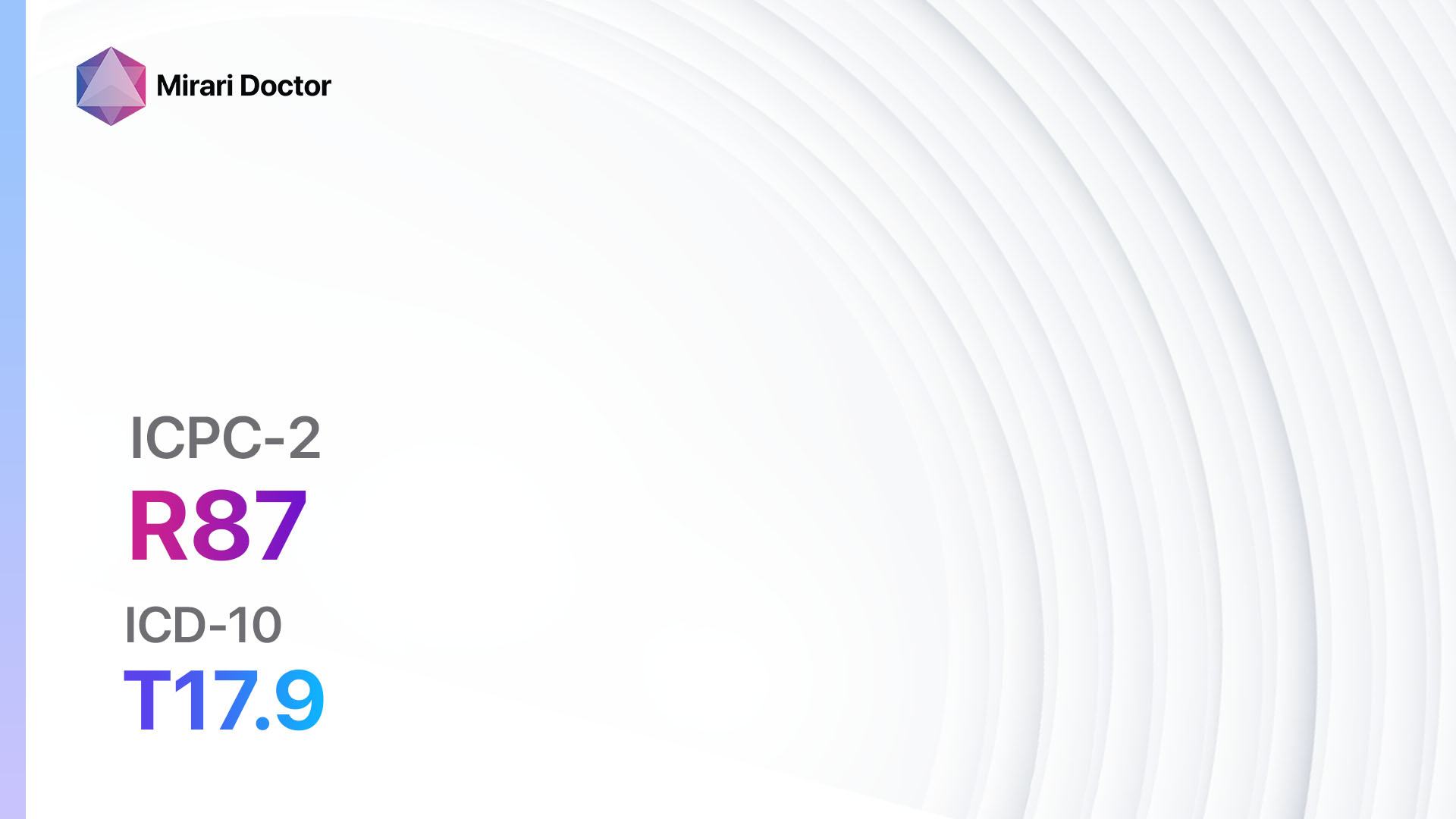
Introduction
Foreign body aspiration occurs when an object enters the nose, larynx, or bronchial tubes, leading to potential complications such as infection, inflammation, and airway obstruction.[1] This guide aims to provide a comprehensive overview of the diagnosis and management of foreign body nose/larynx/bronch, including symptoms, causes, diagnostic steps, possible interventions, and patient education.
Codes
- ICPC-2 Code: R87 Foreign body nose/larynx/bronch
- ICD-10 Code: T17.9 Foreign body in respiratory tract, part unspecified[2]
Symptoms
- Difficulty breathing or shortness of breath
- Coughing or wheezing
- Choking or gagging
- Stridor (high-pitched breathing sound)
- Nasal discharge or bleeding
- Hoarseness or voice changes
- Chest pain or discomfort[3]
Causes
- Accidental inhalation or insertion of small objects into the nose or mouth
- Children are more prone to foreign body aspiration due to their curiosity and tendency to put objects in their mouths
- Older adults with swallowing difficulties may accidentally inhale food or liquid into the airway[4]
Diagnostic Steps
Medical History
- Gather information about the patient’s symptoms, including the duration and severity
- Ask about any recent incidents involving the inhalation or insertion of foreign objects
- Assess for risk factors such as age (children and older adults), cognitive impairment, or underlying medical conditions[5]
Physical Examination
- Perform a thorough examination of the nose, throat, and chest
- Look for signs of inflammation, infection, or airway obstruction
- Listen for abnormal breath sounds, such as wheezing or stridor[6]
Laboratory Tests
- Complete blood count (CBC) to assess for signs of infection or inflammation
- C-reactive protein (CRP) to evaluate the severity of inflammation
- Blood gas analysis to assess oxygen and carbon dioxide levels in the blood[7]
Diagnostic Imaging
- Chest X-ray to visualize the presence and location of the foreign body
- CT scan of the chest for a more detailed assessment of the airway and surrounding structures
- Bronchoscopy, a procedure that uses a flexible tube with a camera to directly visualize and remove the foreign body[8]
Other Tests
- Pulmonary function tests to assess lung function and identify any underlying respiratory conditions
- Allergy testing if an allergic reaction is suspected as the cause of symptoms
- Culture and sensitivity testing of any respiratory secretions to identify potential infections[9]
Follow-up and Patient Education
- Schedule follow-up appointments to monitor the patient’s progress and ensure complete resolution of symptoms
- Provide education on the prevention of foreign body aspiration, especially in children and older adults
- Teach the patient and their caregivers how to perform first aid in case of future incidents[10]
Possible Interventions
Traditional Interventions
Medications:
Top 5 drugs for Foreign body nose/larynx/bronch:
- Bronchodilators (e.g., Albuterol, Ipratropium):
- Cost: Generic versions can be $10-$50/month.
- Contraindications: Hypersensitivity to the medication.
- Side effects: Tremors, increased heart rate.
- Severe side effects: Chest pain, irregular heart rhythm.
- Drug interactions: Beta-blockers, diuretics.
- Warning: Use with caution in patients with cardiovascular disease.
- Antibiotics (e.g., Amoxicillin, Azithromycin):
- Cost: Generic versions can be $5-$30/month.
- Contraindications: Allergy to penicillin or macrolide antibiotics.
- Side effects: Upset stomach, diarrhea.
- Severe side effects: Severe allergic reactions, liver damage.
- Drug interactions: Warfarin, oral contraceptives.
- Warning: Finish the full course of antibiotics as prescribed.
- Steroids (e.g., Prednisone, Dexamethasone):
- Cost: Generic versions can be $5-$20/month.
- Contraindications: Active infections, systemic fungal infections.
- Side effects: Increased appetite, weight gain.
- Severe side effects: Adrenal suppression, osteoporosis.
- Drug interactions: Nonsteroidal anti-inflammatory drugs (NSAIDs), anticoagulants.
- Warning: Taper the dose gradually when discontinuing long-term use.
- Mucolytics (e.g., Acetylcysteine, Carbocisteine):
- Cost: Generic versions can be $10-$30/month.
- Contraindications: Hypersensitivity to the medication.
- Side effects: Nausea, vomiting.
- Severe side effects: Severe allergic reactions, bronchospasm.
- Drug interactions: Nitroglycerin, antibiotics.
- Warning: Use with caution in patients with a history of peptic ulcers.
- Antitussives (e.g., Dextromethorphan, Codeine):
- Cost: Generic versions can be $5-$20/month.
- Contraindications: Respiratory depression, asthma.
- Side effects: Drowsiness, constipation.
- Severe side effects: Respiratory depression, addiction.
- Drug interactions: Monoamine oxidase inhibitors (MAOIs), sedatives.
- Warning: Avoid driving or operating machinery while taking these medications.
Alternative Drugs:
- Antifungal medications (e.g., Fluconazole): If a fungal infection is suspected.
- Antiviral medications (e.g., Oseltamivir): If a viral infection is suspected.
- Antihistamines (e.g., Loratadine, Cetirizine): If allergic rhinitis or postnasal drip is present.
- Nasal decongestants (e.g., Oxymetazoline): To relieve nasal congestion.
Surgical Procedures:
- Bronchoscopy: A procedure to visualize and remove the foreign body from the airway. Cost: $5,000 to $10,000.
- Laryngoscopy: A procedure to visualize and remove the foreign body from the larynx. Cost: $3,000 to $7,000.
- Nasal endoscopy: A procedure to visualize and remove the foreign body from the nose. Cost: $2,000 to $5,000.
Alternative Interventions
- Acupuncture: May help improve respiratory function and reduce inflammation. Cost: $60-$120 per session.
- Herbal remedies: Certain herbs, such as licorice root or mullein, may have expectorant properties to help clear the airways. Cost: Varies depending on the specific herb and preparation.
- Steam inhalation: Inhaling steam from hot water or herbal infusions can help loosen mucus and relieve congestion. Cost: Minimal, using household items.
- Nasal irrigation: Flushing the nasal passages with a saline solution can help remove mucus and foreign particles. Cost: Minimal, using a saline solution or nasal irrigation kit.
- Breathing exercises: Techniques such as pursed-lip breathing or diaphragmatic breathing can help improve lung function and reduce symptoms. Cost: Free, can be done at home.
Lifestyle Interventions
- Avoidance of irritants: Encourage the patient to avoid exposure to smoke, pollutants, and other respiratory irritants.
- Proper hydration: Drinking an adequate amount of fluids can help thin mucus and promote easier expectoration.
- Healthy diet: A balanced diet rich in fruits, vegetables, and whole grains can support overall respiratory health.
- Regular exercise: Engaging in regular physical activity can improve lung function and strengthen respiratory muscles.
- Smoking cessation: If the patient is a smoker, encourage them to quit smoking to reduce airway inflammation and improve respiratory health.
It is important to note that the cost ranges provided are approximate and may vary depending on the location and availability of the interventions.
Mirari Cold Plasma Alternative Intervention
Understanding Mirari Cold Plasma
- Safe and Non-Invasive Treatment: Mirari Cold Plasma is a safe and non-invasive treatment option for various skin conditions. It does not require incisions, minimizing the risk of scarring, bleeding, or tissue damage.
- Efficient Extraction of Foreign Bodies: Mirari Cold Plasma facilitates the removal of foreign bodies from the skin by degrading and dissociating organic matter, allowing easier access and extraction.
- Pain Reduction and Comfort: Mirari Cold Plasma has a local analgesic effect, providing pain relief during the treatment, making it more comfortable for the patient.
- Reduced Risk of Infection: Mirari Cold Plasma has antimicrobial properties, effectively killing bacteria and reducing the risk of infection.
- Accelerated Healing and Minimal Scarring: Mirari Cold Plasma stimulates wound healing and tissue regeneration, reducing healing time and minimizing the formation of scars.
Mirari Cold Plasma Prescription
Video instructions for using Mirari Cold Plasma Device – R87 Foreign body nose/larynx/bronch (ICD-10:T17.9)
| Mild | Moderate | Severe |
| Mode setting: 1 (Infection) Location: 5 (Lungs) Morning: 15 minutes, Evening: 15 minutes |
Mode setting: 1 (Infection) Location: 5 (Lungs) Morning: 30 minutes, Lunch: 30 minutes, Evening: 30 minutes |
Mode setting: 1 (Infection) Location: 5 (Lungs) Morning: 30 minutes, Lunch: 30 minutes, Evening: 30 minutes |
| Mode setting: 2 (Wound Healing) Location: 5 (Lungs) Morning: 15 minutes, Evening: 15 minutes |
Mode setting: 2 (Wound Healing) Location: 5 (Lungs) Morning: 30 minutes, Lunch: 30 minutes, Evening: 30 minutes |
Mode setting: 2 (Wound Healing) Location: 5 (Lungs) Morning: 30 minutes, Lunch: 30 minutes, Evening: 30 minutes |
| Mode setting: 3 (Antiviral Therapy) Location: 5 (Lungs) Morning: 15 minutes, Evening: 15 minutes |
Mode setting: 3 (Antiviral Therapy) Location: 5 (Lungs) Morning: 30 minutes, Lunch: 30 minutes, Evening: 30 minutes |
Mode setting: 3 (Antiviral Therapy) Location: 5 (Lungs) Morning: 30 minutes, Lunch: 30 minutes, Evening: 30 minutes |
| Mode setting: 7 (Immunotherapy) Location: 4 (Heart, Bile & Pancreas) Morning: 15 minutes, Evening: 15 minutes |
Mode setting: 7 (Immunotherapy) Location: 4 (Heart, Bile & Pancreas) Morning: 30 minutes, Lunch: 30 minutes, Evening: 30 minutes |
Mode setting: 7 (Immunotherapy) Location: 4 (Heart, Bile & Pancreas) Morning: 30 minutes, Lunch: 30 minutes, Evening: 30 minutes |
| Total Morning: 60 minutes approx. $10 USD, Evening: 60 minutes approx. $10 USD |
Total Morning: 120 minutes approx. $20 USD, Lunch: 120 minutes approx. $20 USD, Evening: 120 minutes approx. $20 USD, |
Total Morning: 120 minutes approx. $20 USD, Lunch: 120 minutes approx. $20 USD, Evening: 120 minutes approx. $20 USD, |
| Usual treatment for 7-60 days approx. $140 USD – $1200 USD | Usual treatment for 6-8 weeks approx. $2,520 USD – $3,360 USD |
Usual treatment for 3-6 months approx. $5,400 USD – $10,800 USD
|
 |
|
Use the Mirari Cold Plasma device to treat Foreign body nose/larynx/bronch effectively.
WARNING: MIRARI COLD PLASMA IS DESIGNED FOR THE HUMAN BODY WITHOUT ANY ARTIFICIAL OR THIRD PARTY PRODUCTS. USE OF OTHER PRODUCTS IN COMBINATION WITH MIRARI COLD PLASMA MAY CAUSE UNPREDICTABLE EFFECTS, HARM OR INJURY. PLEASE CONSULT A MEDICAL PROFESSIONAL BEFORE COMBINING ANY OTHER PRODUCTS WITH USE OF MIRARI.
Step 1: Cleanse the Skin
- Start by cleaning the affected area of the skin with a gentle cleanser or mild soap and water. Gently pat the area dry with a clean towel.
Step 2: Prepare the Mirari Cold Plasma device
- Ensure that the Mirari Cold Plasma device is fully charged or has fresh batteries as per the manufacturer’s instructions. Make sure the device is clean and in good working condition.
- Switch on the Mirari device using the power button or by following the specific instructions provided with the device.
- Some Mirari devices may have adjustable settings for intensity or treatment duration. Follow the manufacturer’s instructions to select the appropriate settings based on your needs and the recommended guidelines.
Step 3: Apply the Device
- Place the Mirari device in direct contact with the affected area of the skin. Gently glide or hold the device over the skin surface, ensuring even coverage of the area experiencing.
- Slowly move the Mirari device in a circular motion or follow a specific pattern as indicated in the user manual. This helps ensure thorough treatment coverage.
Step 4: Monitor and Assess:
- Keep track of your progress and evaluate the effectiveness of the Mirari device in managing your Foreign body nose/larynx/bronch. If you have any concerns or notice any adverse reactions, consult with your health care professional.
Note
This guide is for informational purposes only and should not replace the advice of a medical professional. Always consult with your healthcare provider or a qualified medical professional for personal advice, diagnosis, or treatment. Do not solely rely on the information presented here for decisions about your health. Use of this information is at your own risk. The authors of this guide, nor any associated entities or platforms, are not responsible for any potential adverse effects or outcomes based on the content.
Mirari Cold Plasma System Disclaimer
- Purpose: The Mirari Cold Plasma System is a Class 2 medical device designed for use by trained healthcare professionals. It is registered for use in Thailand and Vietnam. It is not intended for use outside of these locations.
- Informational Use: The content and information provided with the device are for educational and informational purposes only. They are not a substitute for professional medical advice or care.
- Variable Outcomes: While the device is approved for specific uses, individual outcomes can differ. We do not assert or guarantee specific medical outcomes.
- Consultation: Prior to utilizing the device or making decisions based on its content, it is essential to consult with a Certified Mirari Tele-Therapist and your medical healthcare provider regarding specific protocols.
- Liability: By using this device, users are acknowledging and accepting all potential risks. Neither the manufacturer nor the distributor will be held accountable for any adverse reactions, injuries, or damages stemming from its use.
- Geographical Availability: This device has received approval for designated purposes by the Thai and Vietnam FDA. As of now, outside of Thailand and Vietnam, the Mirari Cold Plasma System is not available for purchase or use.
References
- Fidkowski CW, Zheng H, Firth PG. The anesthetic considerations of tracheobronchial foreign bodies in children: a literature review of 12,979 cases. Anesth Analg. 2010;111(4):1016-1025.
- World Health Organization. International Statistical Classification of Diseases and Related Health Problems, 10th Revision (ICD-10). Geneva: WHO; 2019.
- Metrangelo S, Monetti C, Meneghini L, Zadra N, Giusti F. Eight years’ experience with foreign-body aspiration in children: what is really important for a timely diagnosis? J Pediatr Surg. 1999;34(8):1229-1231.
- Limper AH, Prakash UB. Tracheobronchial foreign bodies in adults. Ann Intern Med. 1990;112(8):604-609.
- Saki N, Nikakhlagh S, Rahim F, Abshirini H. Foreign body aspirations in infancy: a 20-year experience. Int J Med Sci. 2009;6(6):322-328.
- Bai W, Zhou X, Gao X, Shao C, Califano JA, Ha PK. Value of chest CT in the diagnosis and management of tracheobronchial foreign bodies. Pediatr Int. 2011;53(4):515-518.
- Karakoc F, Cakir E, Ersu R, et al. Late diagnosis of foreign body aspiration in children with chronic respiratory symptoms. Int J Pediatr Otorhinolaryngol. 2007;71(2):241-246.
- Hitter A, Hullo E, Durand C, Righini CA. Diagnostic value of various investigations in children with suspected foreign body aspiration: review. Eur Ann Otorhinolaryngol Head Neck Dis. 2011;128(5):248-252.
- Martinot A, Closset M, Marquette CH, et al. Indications for flexible versus rigid bronchoscopy in children with suspected foreign-body aspiration. Am J Respir Crit Care Med. 1997;155(5):1676-1679.
- Rodrigues AJ, Oliveira EQ, Scordamaglio PR, Gregório MG, Jacomelli M, Figueiredo VR. Flexible bronchoscopy as the first-choice method of removing foreign bodies from the airways of adults. J Bras Pneumol. 2012;38(3):315-320.
Related articles
Made in USA


